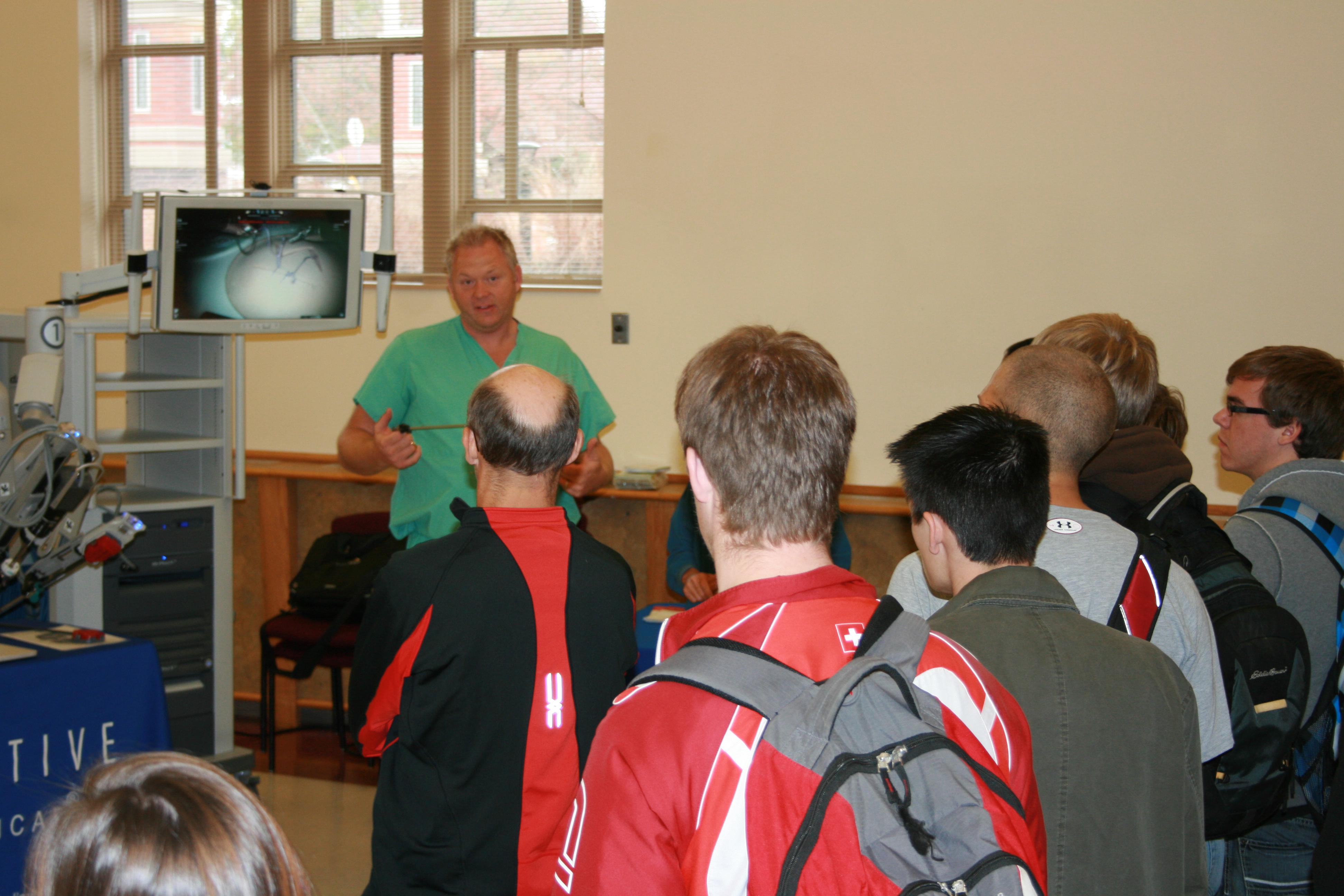“It’s the future of minimally invasive surgery.”
It seems a bold statement, but those were the words Dr. Mike Thompson, general surgeon at Pella Regional Health Center (PRHC), used to describe the daVinci Surgical System simulator brought to Central’s campus on October 18.
The machine, costing $1.5 million, certainly looked like something from the future. The long arms spidering out from the patient side-cart make it look more like a deep-sea submersible than a machine to assist in heart surgery.
The daVinci Surgical System uses robotic arms and a camera to perform precise, minimally invasive surgery. Instead of requiring surgeons to expose the entire abdomen, the machine makes only small incisions, about one centimeter each.
With such a minimally invasive procedure, the patient experiences less discomfort, recovers more quickly and leaves the hospital sooner.
 When PRHC brought the da Vinci simulator to campus, students had the opportunity to test the robot’s dexterity themselves. They were challenged to lift rubber rings off a cone, transfer them between hands and replace them on another cone.
When PRHC brought the da Vinci simulator to campus, students had the opportunity to test the robot’s dexterity themselves. They were challenged to lift rubber rings off a cone, transfer them between hands and replace them on another cone.
The simulation was open for six hours to the Central community and the general public. Classes from the biology and computer science departments visited the simulator and learned about its use from PRHC and da Vinci employees.
During a surgery, the surgeon sits across the room from the patient and, looking into a 3D display, controls the incredibly precise arms that perform the procedure.
“It can feel like the video game world has met surgery,” joked Thompson after he deftly tied a demonstrative suture with the device. “But the stakes are obviously higher, and there’s no reset button.”
PRHC has been using the machine since May 2010, and three of its surgeons are trained in its use. Pella is one of the smallest of approximately 1,200 hospitals in the country to use the robotic system.
 Unlike previous laparoscopy procedures, which required awkward movements and had a limited range of motion, the da Vinci system allows a surgeon full use of the wrist, Thompson explained. The machine scales down the movements on a 3:1 scale.
Unlike previous laparoscopy procedures, which required awkward movements and had a limited range of motion, the da Vinci system allows a surgeon full use of the wrist, Thompson explained. The machine scales down the movements on a 3:1 scale.
“It makes difficult things very easy for us,” Thompson told students. “That translates to better patient results.”



